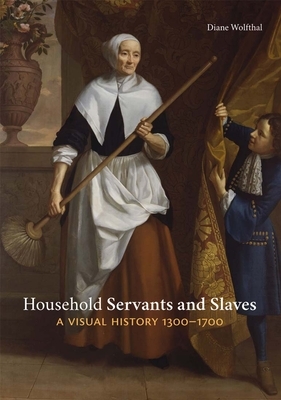Nous utilisons des cookies pour améliorer votre expérience. Pour nous conformer à la nouvelle directive sur la vie privée, nous devons demander votre consentement à l’utilisation de ces cookies. En savoir plus.
Household Servants and Slaves
Yale Uk - EAN : 9780300234879
Édition papier
EAN : 9780300234879
Paru le : 17 mai 2022
45,00 €
42,65 €
Bientôt disponible
Pour connaître votre prix et commander, identifiez-vous
A paraître 17 mai 2022
Notre engagement qualité
-
 Livraison gratuite
Livraison gratuite
en France sans minimum
de commande -
 Manquants maintenus
Manquants maintenus
en commande
automatiquement -
 Un interlocuteur
Un interlocuteur
unique pour toutes
vos commandes -
 Toutes les licences
Toutes les licences
numériques du marché
au tarif éditeur -
 Assistance téléphonique
Assistance téléphonique
personalisée sur le
numérique -
 Service client
Service client
Du Lundi au vendredi
de 9h à 18h
- EAN13 : 9780300234879
- Editeur : Yale Uk
- Date Parution : 17 mai 2022
- Disponibilite : Pas encore paru
- Barème de remise : NS
- Nombre de pages : 227
- Format : H:169 mm L:241 mm
- Poids : 0gr
- Résumé : The first book-length study of both images of ordinary household workers and their material culture, Household Servants and Slaves: A Visual History, 1300–1700 covers four hundred years and four continents, facilitating a better understanding of the changes in service that occurred as Europe developed a monetary economy, global trade, and colonialism. Diane Wolfthal presents new interpretations of artists including the Limbourg brothers, Albrecht Dürer, Paolo Veronese, and Diego Velázquez, but also explores numerous long-neglected objects, including independent portraits of ordinary servants, servant dolls and their miniature cleaning utensils, and dummy boards, candlesticks, and tablestands in the form of servants and slaves. Wolfthal analyzes the intersection of class, race, and gender while also interrogating the ideology of service, investigating both the material conditions of household workers’ lives and the immaterial qualities with which they were associated. If images repeatedly relegated servants to the background, then this book does the reverse: it foregrounds these figures in order to better understand the ideological and aesthetic functions that they served.

